DEFINITION OF TERMS:
- KEYSTONE means they are listed by National Wildlife Federation as core plants for a wildlife garden in my ecoregion (Ecoregion 8).
- NOT QUITE NATIVE means they are slightly out of range as determined by GoBotany and NY Flora Atlas.
- Otherwise the plant is a NY-native or is native to the area noted.
Blue cohosh (Caulophyllum thalictroides)
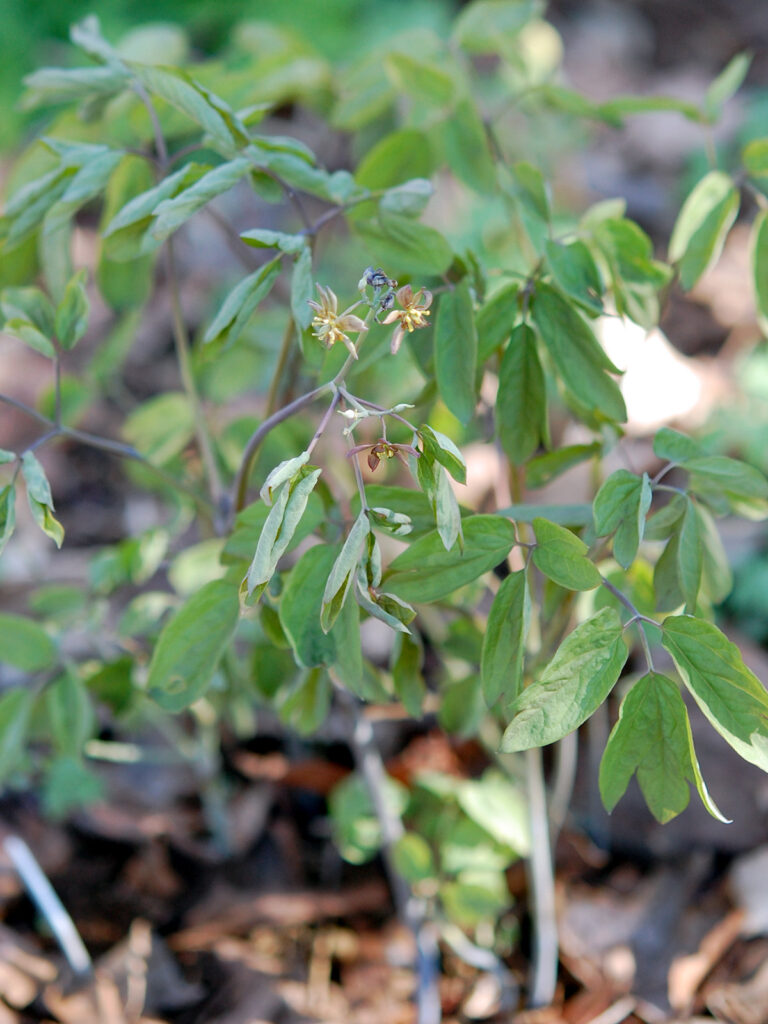
Not a spectacular plant, but a pleasant plant with nice foliage and berries. It’s in our front woodland garden.
- Learn more:
- Wildflower Center: Blue cohosh
White turtlehead (Chelone glabra)
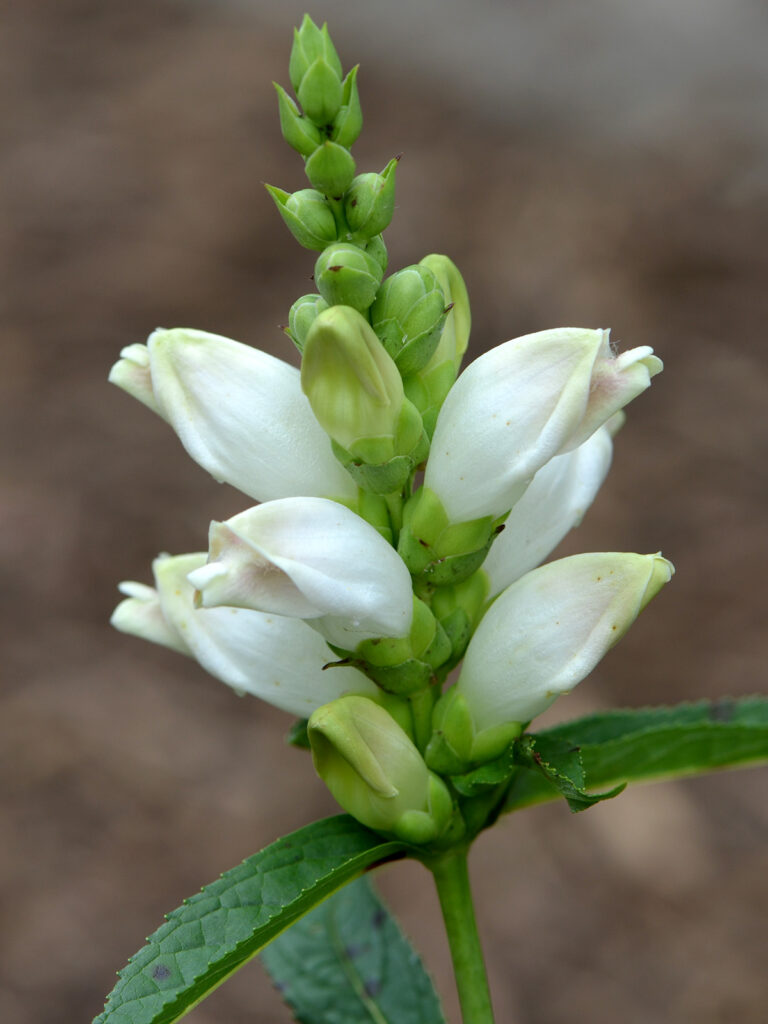
Not only is this a good nectar plant, but this white turtlehead is also the larval host plant for the Baltimore checkerspot and the buckeye butterflies. We have it growing in and near our stream.
Unlike C. lyonii, it hasn’t spread much unfortunately.
Wildlife: Butterflies, hummingbirds
Larval host: Baltimore Checkerspot
- Learn more:
- Wildflower Center: White turtlehead
SOUTHEAST NATIVE: Pink turtlehead (Chelone lyonii)
UPDATE: I don’t know where I acquired this plant many years ago, but I thought it was native. Maybe from a big box store that labels anything in the continent native?? I think some of them are a cultivar called ‘Hot Lips’. I probably will keep these as part of my 5-10% non-native plants, but if I had known they were a SE-native, I wouldn’t have bought them originally.
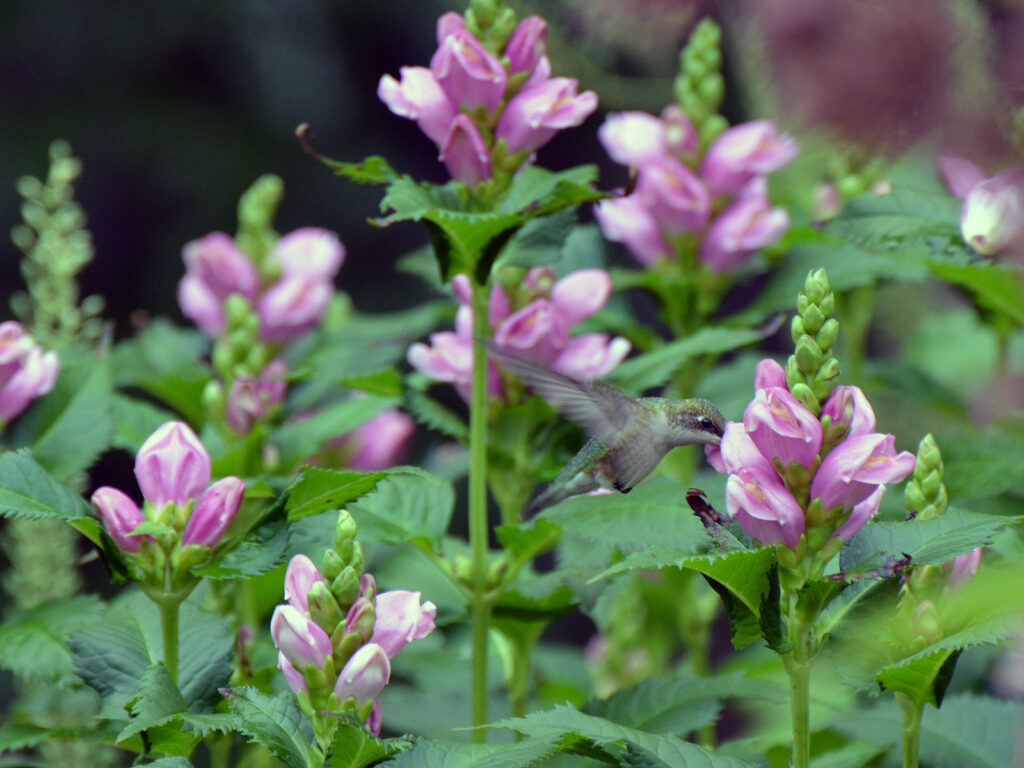
As far as I know, unlike the white glabra, this is not a larval host plant, but it is a good nectar plant.
It’s a very interesting flower form, and I love to watch bumble bees crawling inside.
As you can see, hummers like it, too!
- Learn more:
- Wildflower Center: Pink turtlehead
NOT QUITE NATIVE: Golden star (Chrysogonum virginianum)
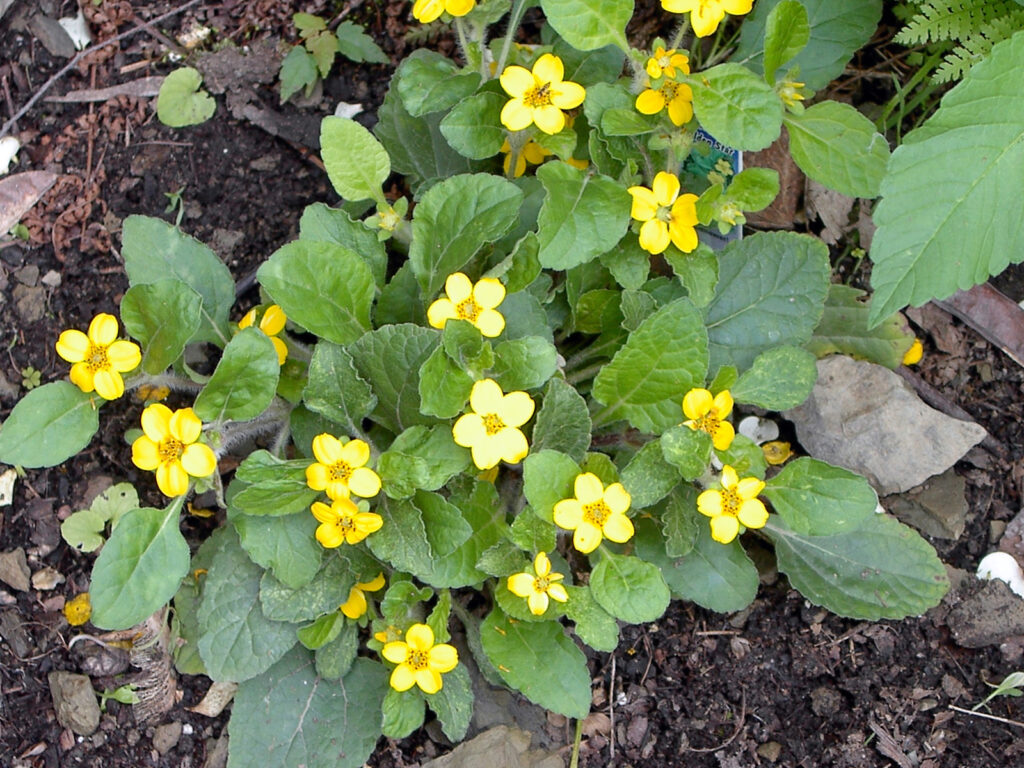
Golden star is a simple, unsophisticated plant — sunny and happy. This one died out, probably from my not-so-benign neglect. I’d like to get another one and see if I can get a patch going.
- Learn more:
- Wildflower Center: Golden star
Black cohosh aka Bugbane (Actaea racemosa var. racemosa Syn: Cimicifuga racemosa)
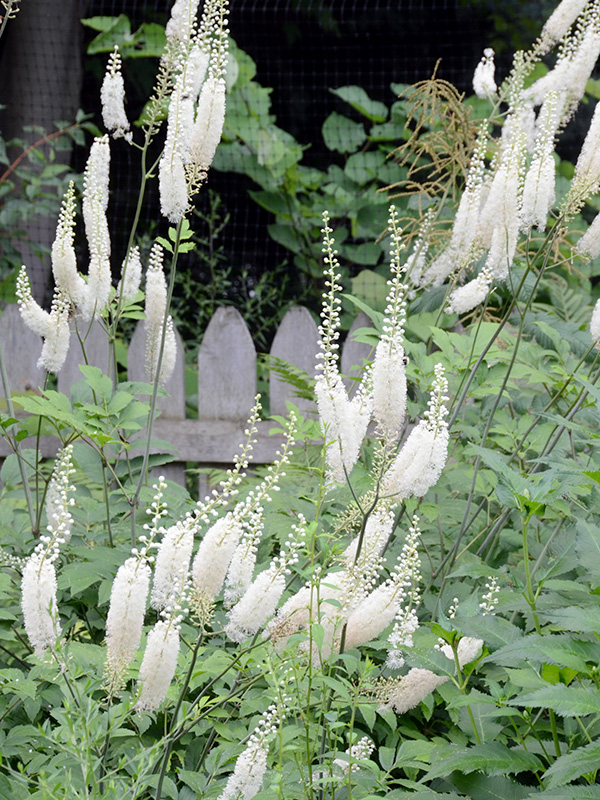
One of my favorite plants — it really lights up a shady corner, and bees love it! I also like the snowflake-like little flowers, and the perfectly round little flower buds, too. It’s very easy to grow and divide up for new plants.
Wildlife: Butterflies
Larval host: Spring azure
- Learn more:
- Wildflower Center: Black cohosh
KEYSTONE: Pasture thistle (Cirsium discolor)
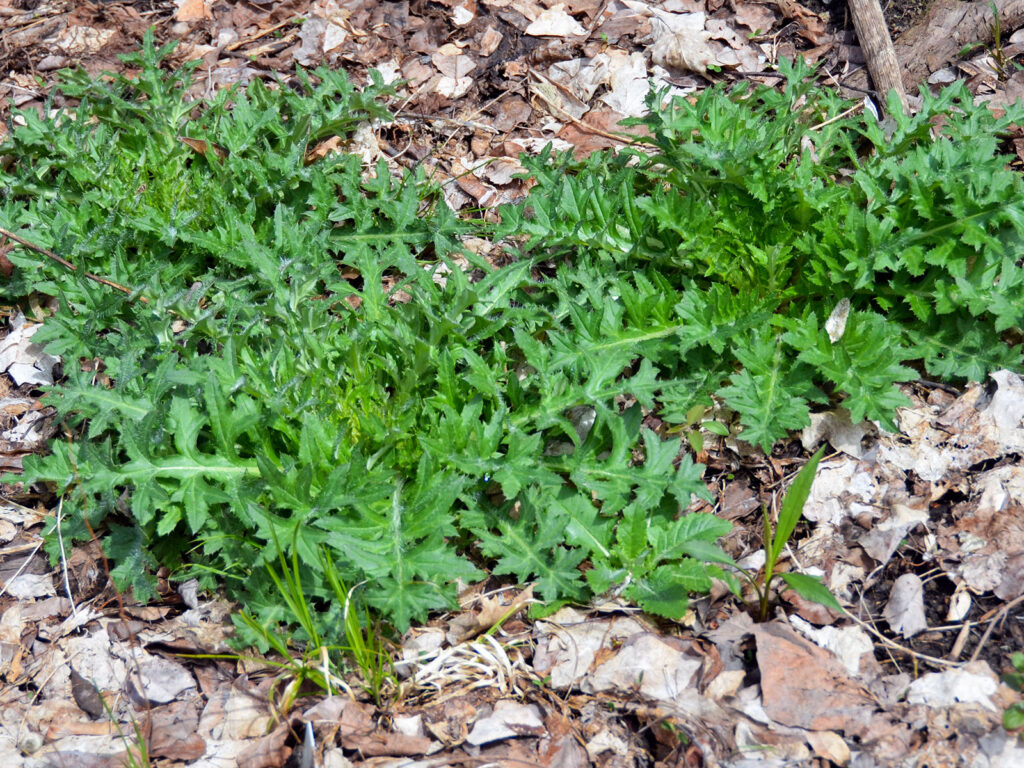
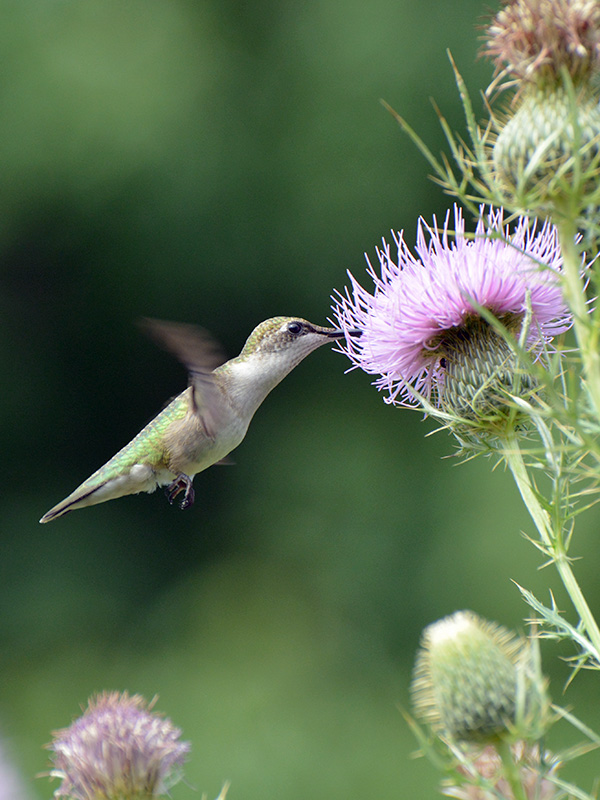
I didn’t think we’d ever deliberately plant thistle, but one of our most-admired organizations, The Xerces Society, has stressed how important NATIVE thistles are. True, most of the thistles we see along the road or in fields are non-native invasive species, but in the important effort to eradicate the invasive species, we’ve been eradicating the native species as well. And these native thistles are very important for wildlife.
The Xerces Society in Feed the Monarchs:
“Because of their high monarch attractiveness, this group [native thistles] represents a ‘must-have’ for any serious butterfly gardener.”
Home landscapes may indeed be the easiest place to re-establish native thistles as opposed to natural areas where someone would have to determine which thistles are native or non-native. At least in my landscape over the years I’ve never seen a thistle grow, so the ones I see are most likely the ones I planted, and I’ll get more experienced with IDing these plants.
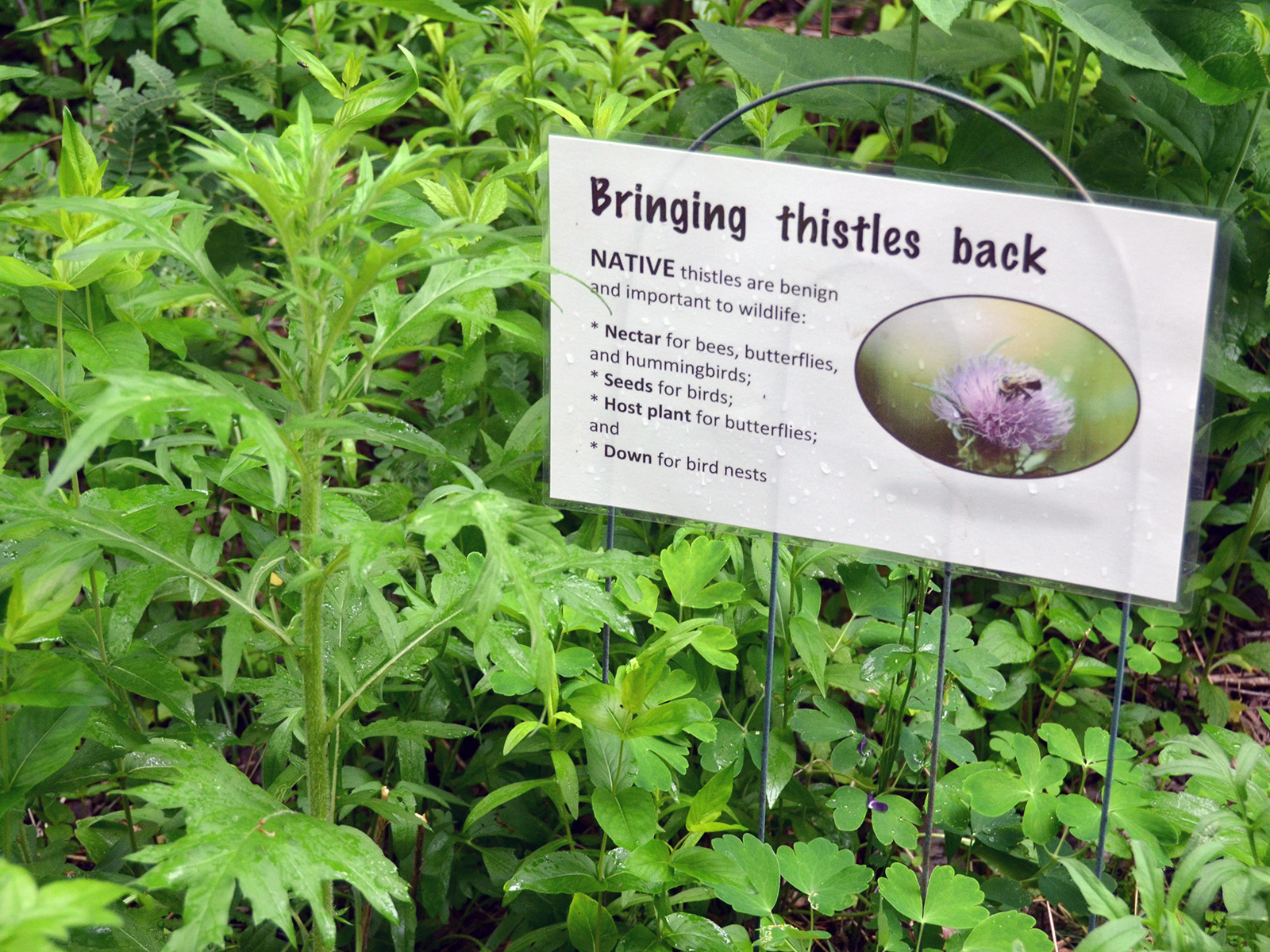
We first ordered seeds of these natives from an online native plant nursery since there’s no place to buy thistle plants otherwise, and I wasn’t confident about my ability to determine thistle species in the wild. If I recall correctly, it was Prairie Moon Nursery.
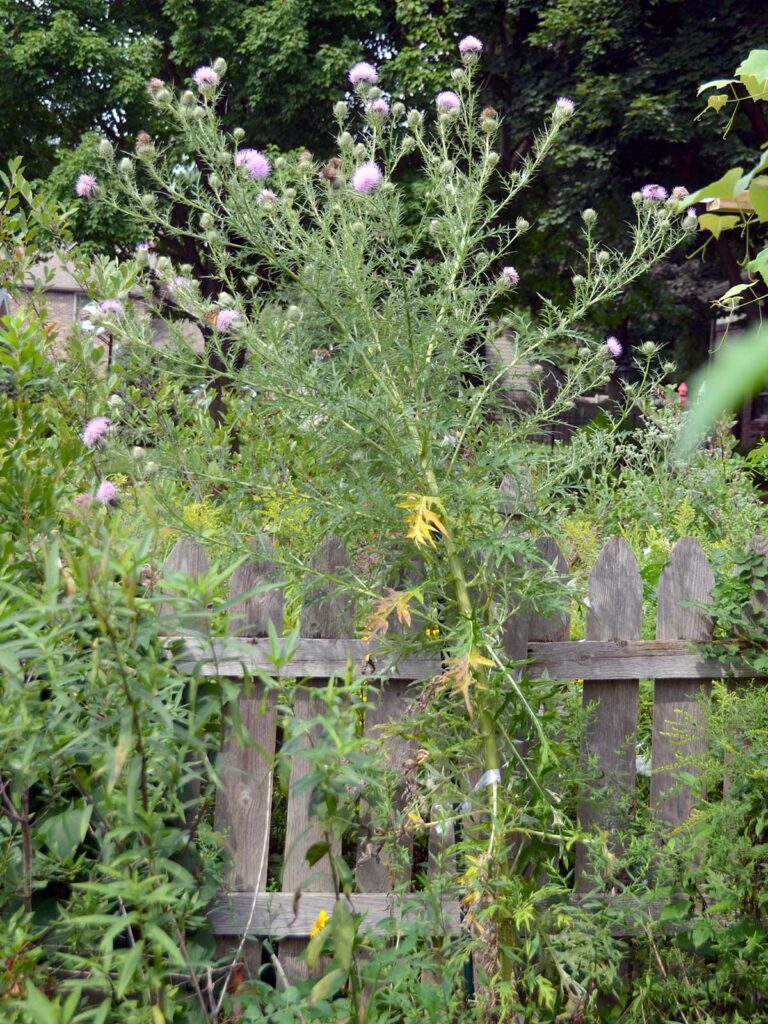
In 2021, we bought a seedling plant at our HGCNY plant sale, and this plant is doing great! As of July 2022, it’s about 6 feet tall with multiple flower buds.
We’ve seen a lot of bumble bees, some butterflies, and hummingbirds at this plant. And the goldfinches are starting to come for the seeds as the flowers ripen!
IMPORTANT: These are biennials, so the first year they establish a rosette, and then they bloom the next. Since we want to a continuing patch of thistles we’re leaving the seed heads.
Here’s our progress so far:
- 2016 – planted the seeds
- 2017 – bloomed and we left the seedheads
- 2018-2020 – I didn’t see any new volunteer seedlings (so much for worrying about being overrun with thistles!)
- 2021 – As of early August, we have a second year plant ready to bloom, so I must have missed last year’s rosette.
- Learn more:
- Wildflower Center: Pasture thistle
- Xerces Society:
- Choose Natives: The irresistible thistle – Why our gardens are incomplete without this invaluable native
Horse balm (Collinsonia canadensis)
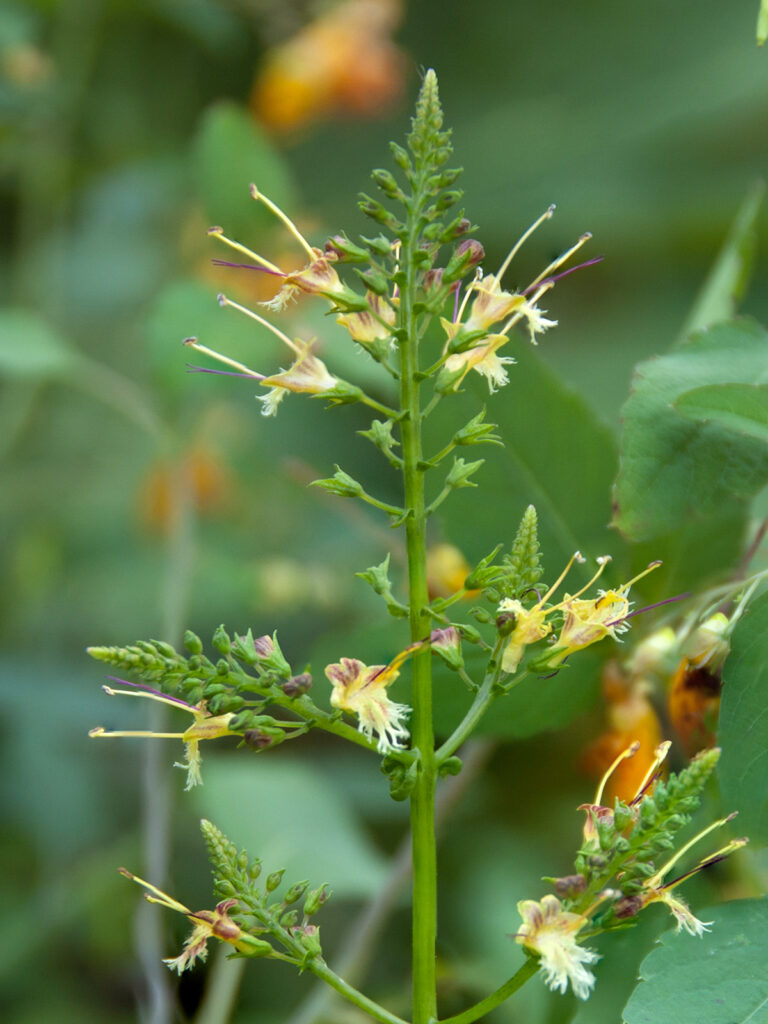
I bought this plant knowing nothing about it other than that it was a native plant.
So far, it seems intriguing. Since then I’ve found out that it’s usually grown as a medicinal plant.
I will try to keep track of pollinator activity around it.
- Learn more:
- Wildflower Center: Horse balm
Tall tickseed (Coreopsis tripteris)
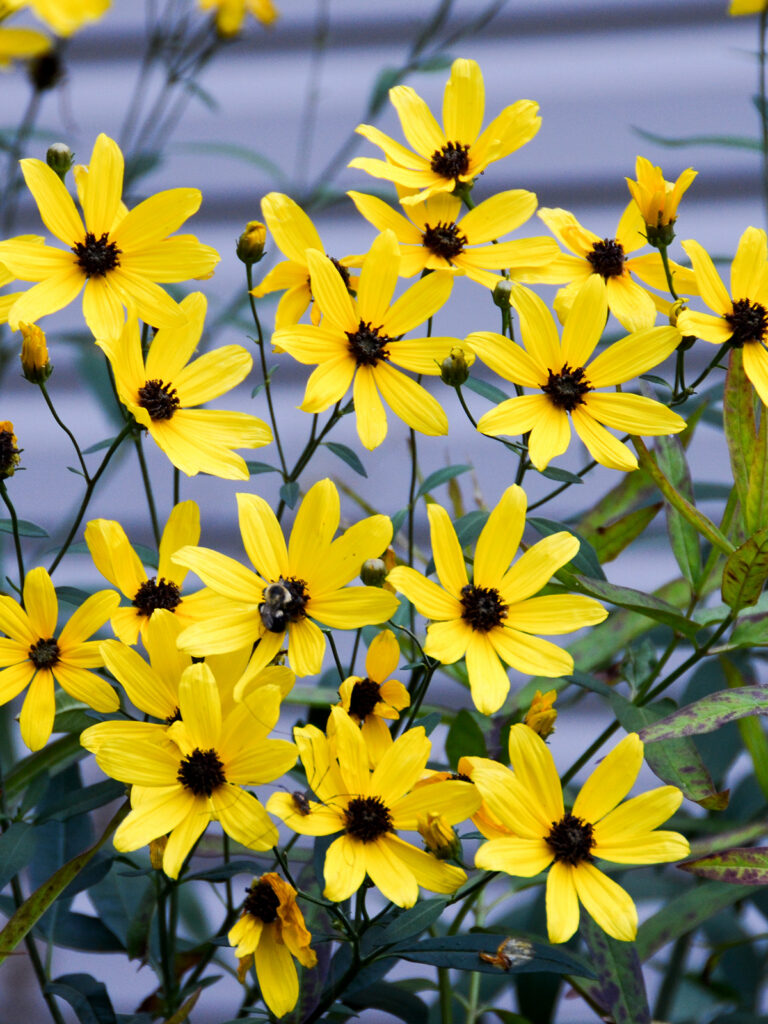
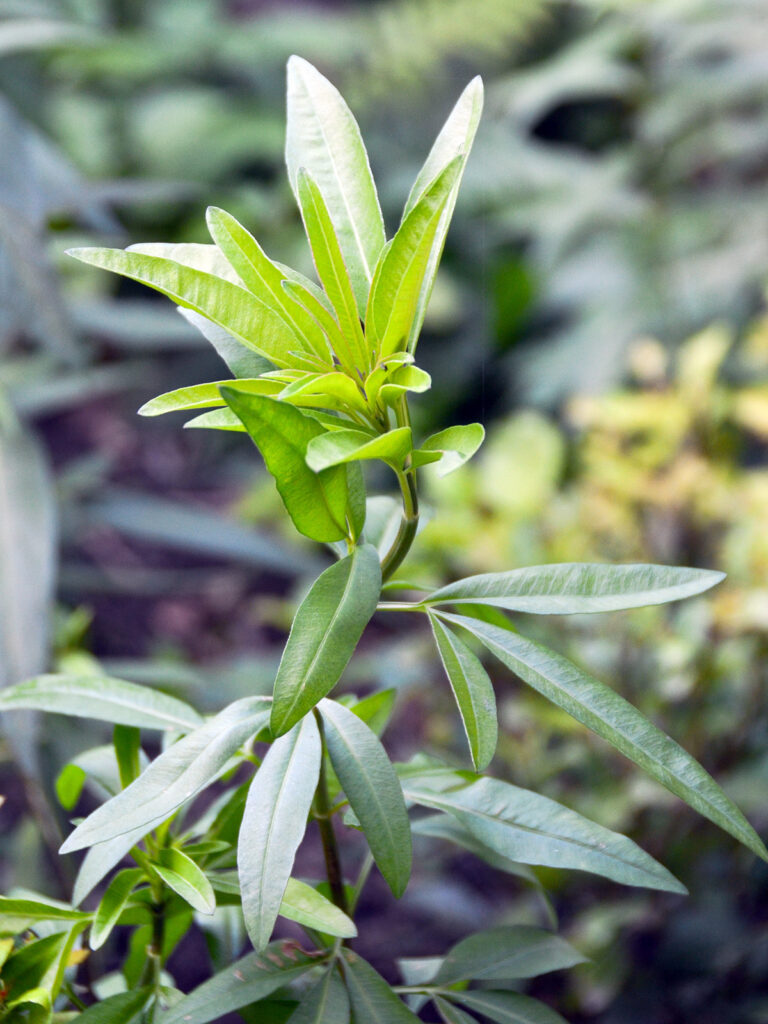
One of the finds at our 2014 HGCNY plant sale. It has beautiful leaves.
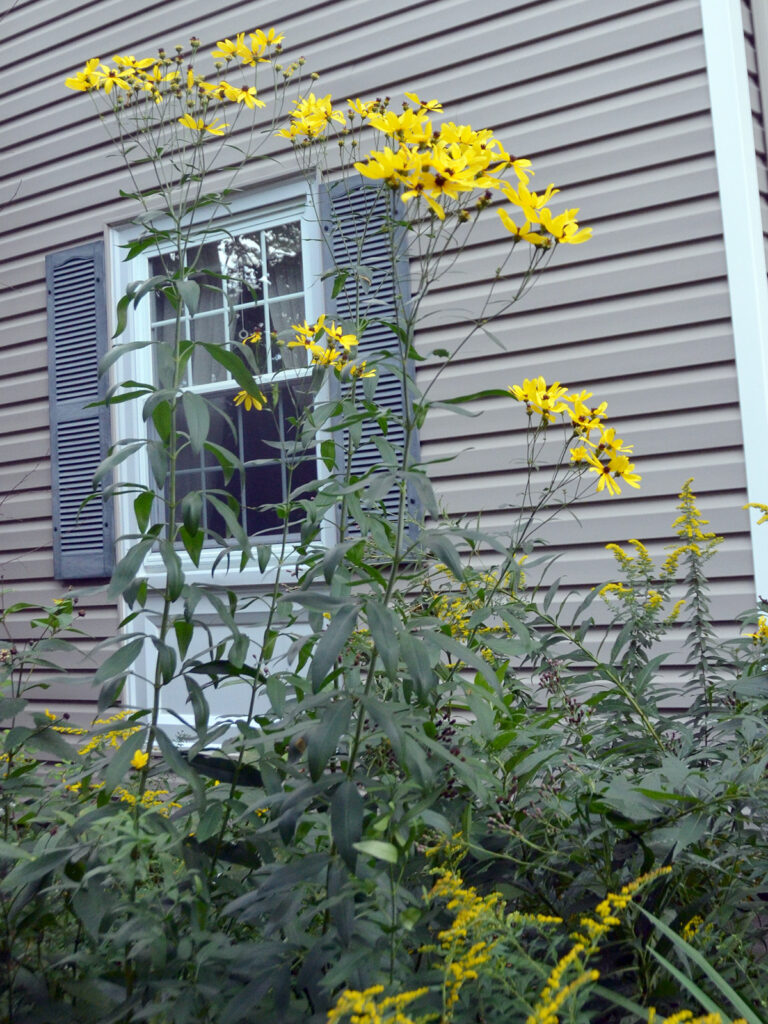
One of the finds at our 2014 HGCNY plant sale. It has beautiful leaves.
Beautiful sunny flowers, very clear color. It blooms in late summer, a little later than other plants. The plant gets very tall (over 6 feet), though it somehow seems to remain upright. I might prune some of the stalks back in June to see if it will stay a little shorter, though having some in the background is nice.
- Learn more:
- Wildflower Center: Tall tickseed
SOUTHEAST NATIVE: Tickseed (Coreopsis verticillata ‘Zagreb’)
More info from Wildflower Center
I once had a lot of this, but I became alarmed at how much it was spreading. I pulled out most of it, but I still have some growing that escaped my rampage.
I don’t mind having a little of this because it does provide nectar and seeds for birds, but I’ll have to keep my eye on it so it doesn’t spread unduly.
Another mark against it is that it’s a cultivar, which I don’t plant any more. But then most of the plants I bought in the early 2000s were cultivars since that’s what they sold …
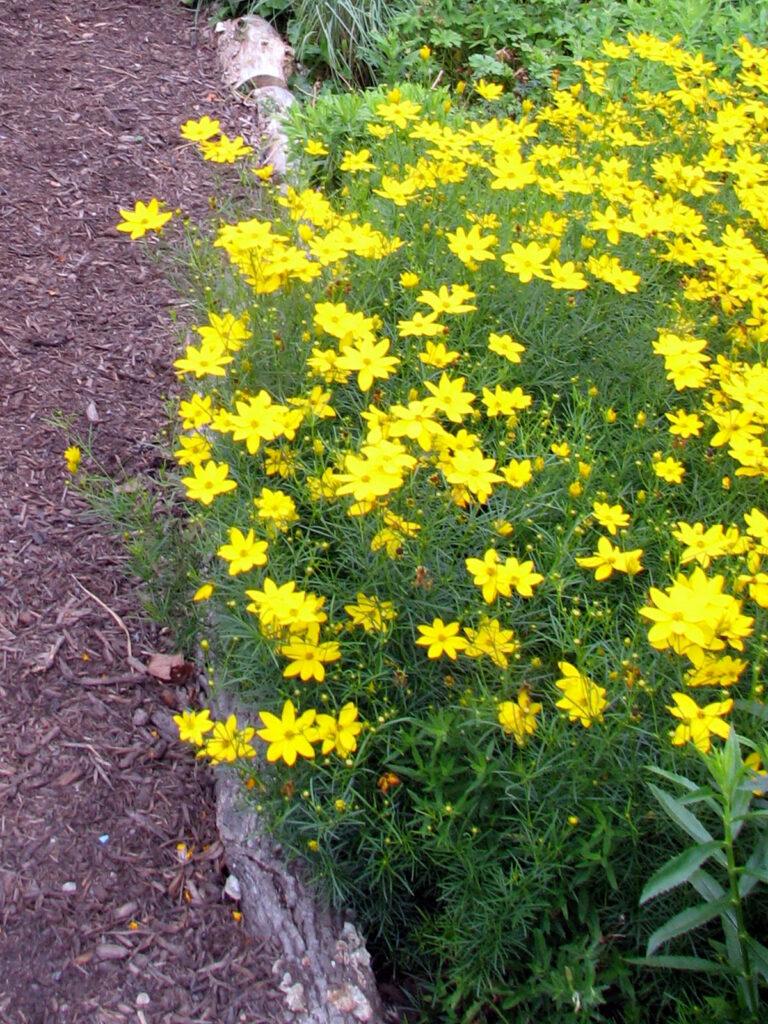
- Learn more:
- Wildflower Center: Tickseed
